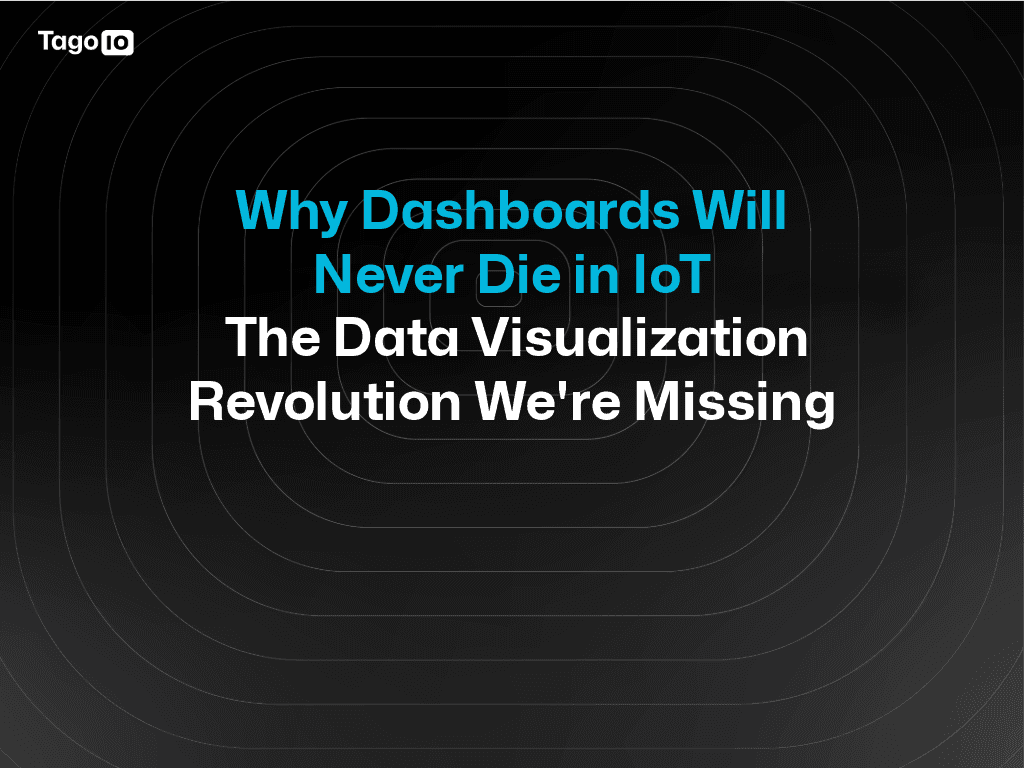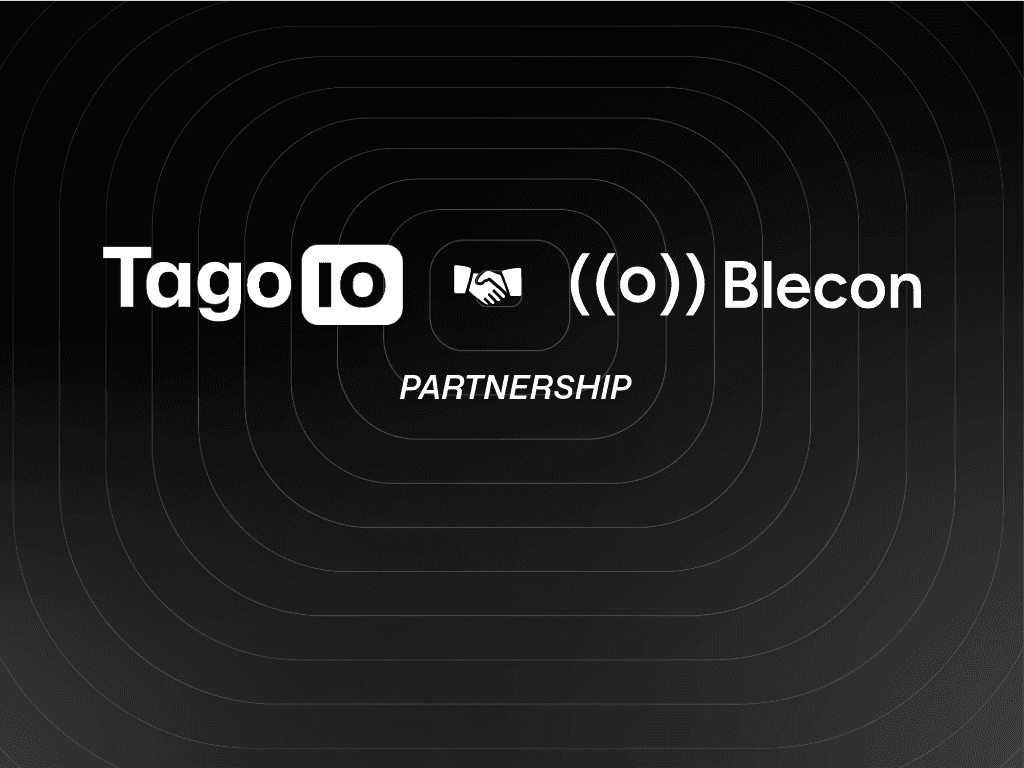Blog
Tech Insigths
RTLS Kickstarter: Deploy Indoor Asset Tracking in Hours, Not Months
Launch your own real-time location system in hours with TagoIO’s free RTLS Kickstarter, a ready-to-use open-source foundation for asset tracking.

TagoIO Team
Oct 23, 2025



Deploying a Real-Time Location System traditionally means months of development, wrestling with integration challenges, and building infrastructure from scratch. TagoIO's RTLS Kickstarter helps companies change this equation. It's a free, open-source foundation that gives you a production-ready location tracking application you can customize and deploy in hours.
Understanding RTLS Applications
Real-Time Location Systems track assets, inventory, and personnel across both indoor and outdoor environments. Whether you're monitoring equipment moving through a warehouse, tracking vehicles across a campus, or following assets from facility to field, RTLS provides the visibility needed to make informed operational decisions.
The business case for RTLS extends far beyond simple tracking. Managers gain unparalleled oversight and control, enabling swift, informed decisions. Organizations deploy these systems to reduce search time for critical equipment, optimize workflows through movement pattern analysis, prevent asset loss via geofencing, improve utilization rates of underused resources, and enhance personnel safety in hazardous environments.
RTLS provides enhanced visibility with a bird's-eye view of operations, allowing precise tracking of inventory levels, equipment status, and workflow processes. It improves accuracy by reducing reliance on manual tracking, significantly reducing errors for more accurate order fulfillment and inventory records. The technology streamlines operations by automating tasks like inventory management and order processes, saving time and reducing the need for manual labor.
Main Challenges in RTLS Deployment
Implementing a real-time location system often comes with a few common challenges:
Integration with Non-IoT Systems
RTLS data must flow into ERPs, warehouse management systems, maintenance platforms, and business intelligence tools. The challenge is that most enterprise systems weren't designed for IoT integration. APIs may be limited or non-existent, data formats incompatible, and real-time synchronization difficult to implement. This is particularly critical for logistics companies managing multiple warehouses that need symbiotic processes and intrinsic asset management across all their facilities. Building these bridges consumes significant development time and ongoing maintenance effort.
Multi-Technology Integration
Facilities often require multiple RTLS technologies to cover different use cases: UWB for high-precision areas, BLE for general tracking. Each technology brings different communication protocols, data formats, and configuration requirements. Managing this complexity while maintaining a unified view of asset locations across indoor and outdoor environments presents a significant technical challenge.
Scalability Challenges
The jump from hundreds to thousands of sensors introduces exponential complexity. Companies like Amazon, Walmart, and Target need systems that provide asset management across all facilities simultaneously. Managing firmware updates, ensuring time synchronization, preventing network congestion, and handling high data loads are key challenges for large-scale RTLS deployments.
Preventive Maintenance
Battery-powered sensors demand continuous monitoring to prevent unexpected downtime. A missed low-battery alert can mean lost visibility of critical assets at crucial moments. Coordinating replacement schedules across hundreds or thousands of devices in 24/7 operations requires careful planning.
How TagoIO's RTLS Kickstarter Helps Solve These Problems
TagoIO's RTLS Kickstarter is a free, production-ready tool that helps you quickly launch RTLS IoT applications working with both indoor and outdoor locations. Fully customizable, it compresses months of development into hours of deployment time. Instead of building from scratch, developers get a complete foundation with pre-configured dashboards for asset tracking and heat mapping, device management interfaces, automated alert systems, and integration frameworks that bridge RTLS data with enterprise systems.
The solution is built on a modular architecture that handles data ingestion from multiple protocols (MQTT, HTTP, LoRaWAN), processes location data through configurable algorithms, and provides real-time visualization for thousands of concurrent assets. The Kickstarter supports multiple RTLS technologies out of the box and provides infrastructure to handle the scalability challenges inherent in large deployments.

Key Features of the TagoIO’s RTLS Kickstarter
Universal IoT Device Support: The Kickstarter works with hardware from multiple manufacturers. Connect Tektelic GPS trackers, SenseCAP multi-mode devices, Minew BLE beacons, or standard LoRaWAN sensors. Mix technologies based on your needs: cellular for mobile outdoor assets, BLE for indoor tracking or UWB for high-precision applications.
Indoor and Outdoor Tracking: Location tracking isn't confined to one environment. The Kickstarter handles transitions seamlessly. An asset moves from warehouse floor to loading dock to delivery truck, and your system maintains visibility throughout. Upload floor plans for indoor spaces, use maps for outdoor areas, or combine both in a single view.
Geofencing with GeoJSON: Draw custom zones directly on maps using standard GeoJSON format. Define delivery territories, restricted areas, safety zones, or operational boundaries. The system monitors when assets enter or exit these zones, triggering alerts or automations based on your rules.
Battery and Device Management: Create monitoring triggers for battery levels across your device fleet. The system tracks device health, helping you schedule maintenance before assets go offline. Manage thousands of devices through a centralized interface with bulk configuration and firmware update capabilities.
Alert and Reporting System: Build multiple alert rules from one interface. Monitor geofence breaches, battery levels, or custom conditions specific to your operation. The alert acknowledgment feature tracks who responded to each alert and when, providing accountability and audit trails.
Access the last 10 location readings for each sensor, with history automatically organized by indoor/outdoor context. Generate reports for compliance, analysis, or operational review.
Multi-Language Interface: The Kickstarter currently supports English and Portuguese, with architecture designed for additional languages as your deployment expands internationally.
Supported Technologies and Hardware
The Kickstarter's device-agnostic approach lets you choose hardware based on your requirements rather than platform limitations.
Connectivity Options
Bluetooth Low Energy: Indoor tracking with excellent battery efficiency
Ultra-Wideband: Sub-meter precision for demanding applications
LoRaWAN: Long-range, low-power for large facilities
Cellular (2G/3G/4G/5G): Mobile asset tracking with wide coverage
Satellite: Remote area tracking beyond cellular networks
Wi-Fi: Leverage existing infrastructure for room-level tracking
Compatible Hardware: the platform integrates with devices from Tektelic, SenseCAP, Minew, Lansitec, MokoSmart and other manufacturers supporting standard protocols. Add environmental sensors (temperature, humidity, shock, vibration) to enhance tracking with condition monitoring for sensitive cargo or equipment.
Explore all IoT devices that can be integrated with TagoIO here.
Deployment Process
Installing the RTLS Kickstarter takes minutes. From your TagoIO account, deploy the complete application with one click. The system creates pre-configured dashboards, device templates, alert frameworks, and integration endpoints.
From there, customize based on your needs:
Configure your spaces: Upload floor plans for indoor facilities, define outdoor boundaries on maps
Add your devices: Register sensors through the device management interface
Set up zones: Draw geofences matching your operational requirements
Create alerts: Define monitoring rules for locations, batteries, and custom conditions
Customize the interface: Adapt dashboards, reports, and visualizations to your workflow
Integrate systems: Connect to your ERP, WMS, or other platforms via API
The complete source code is available on GitHub. Review the implementation, understand the architecture, modify components, or use it as reference for your own development.
Customization and Extension
The Kickstarter's value comes from being a starting point, not an endpoint. Organizations modify positioning algorithms based on their facility layouts, add custom business logic through Analysis scripts, and integrate with proprietary systems using TagoIO's API. They extend the dashboard with widgets specific to their operational metrics.
The platform supports this flexibility intentionally. Your RTLS requirements are unique to your operation, your facilities, your assets, and your workflows. The Kickstarter handles the common challenges (device connectivity, data visualization, alert management), freeing you to focus on what makes your implementation valuable.

Real-World Implementation Examples
Logistics and Warehouse Operations
Organizations tracking assets across multiple facilities use the Kickstarter to maintain visibility from receiving through storage to shipping. Geofencing prevents equipment from leaving designated areas. Battery monitoring ensures trackers don't go offline during critical shipments. Integration with warehouse management systems provides unified visibility across physical and digital operations.
Safety features help prevent accidents. When forklifts enter areas with pedestrian traffic, the system alerts operators. Movement pattern analysis identifies workflow bottlenecks, informing layout optimizations.
Want to learn more about IoT in logistics and warehouse operations?
Download the “Warehouse Logistics: Integrating IoT Solutions” e-book to learn how smart tracking, geofencing, and real-time visibility are transforming the supply chain.
Healthcare Equipment Management
Hospitals deploy the system to track mobile equipment (infusion pumps, monitors, beds) across departments. Location data integrates with electronic health records, showing equipment availability in real-time. Geofencing around sterile zones or controlled substance areas ensures compliance.
Usage pattern analysis identifies underutilized equipment, reducing unnecessary purchases. Predictive maintenance scheduling based on movement and usage data prevents equipment failures.
Manufacturing and Industrial Sites
Manufacturing operations track tools, fixtures, and work-in-progress inventory across production floors. The system monitors dwell time at each station, identifying bottlenecks. Safety zone monitoring ensures personnel stay clear of hazardous areas. Integration with MES systems connects physical asset movement to production scheduling.
Discover how IoT is redefining equipment monitoring in modern manufacturing.
Explore the “Building Smarter Equipment Monitoring Systems” e-book to see how real-time visibility and connected systems can improve asset utilization, prevent downtime, and streamline production performance across industrial sites.
Getting Started
The RTLS Kickstarter is available now in your TagoIO account. Deploy it, explore the code on GitHub, and adapt it to your needs.
Whether you're tracking assets in a single facility or managing complex logistics operations across multiple sites, the Kickstarter provides the foundation to build from. The real work, the valuable work, is understanding your specific requirements and customizing the system accordingly. That's where you bring the expertise.
Want to keep exploring how IoT can transform your operations?
Visit our E-books Library to access more free resources covering logistics, manufacturing, smart buildings, and other IoT applications.

TagoIO Team


